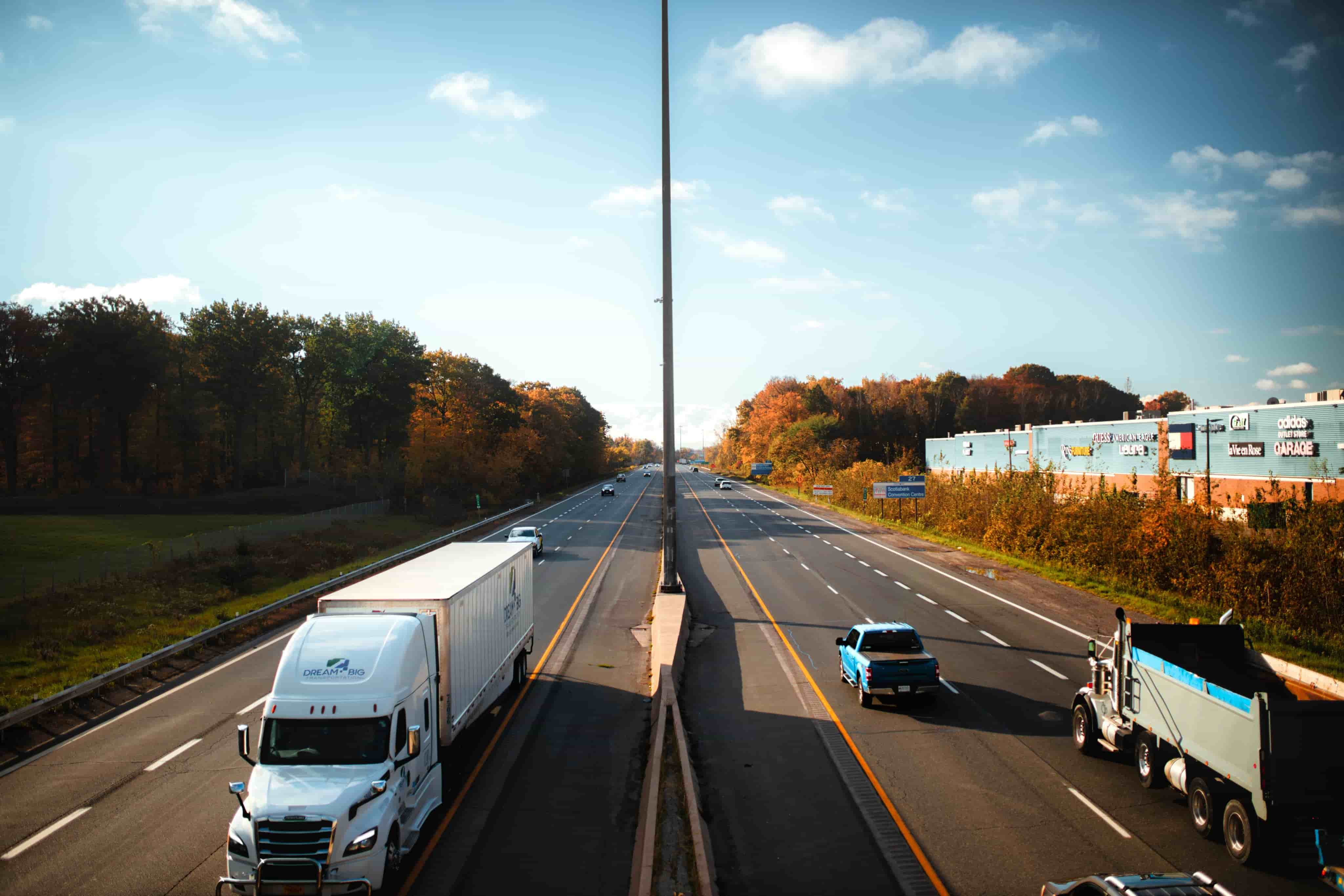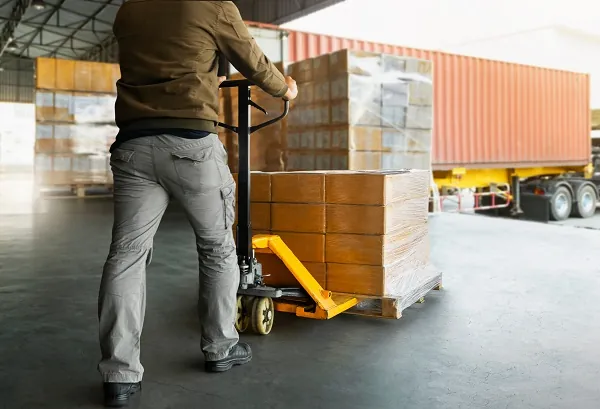
Shipping Camping Gear
Expert Freight Shipping for Outdoor and Camping Equipment
Shipping camping gear via freight is a convenient and reliable option for outdoor enthusiasts looking to transport their equipment efficiently.
Whether you’re a manufacturer, outfitter, outdoor retailer, or passionate camper moving cross-country, FreightCenter offers smart solutions for shipping camping gear of all shapes and sizes. From backpacking tents to portable grills, camping stoves, and bulk survival kits, we connect you with the right carriers and services for safe, efficient delivery.
Our team makes sure your gear arrives where the adventure begins—on time and damage-free.
Thousands of businesses trust FreightCenter to move their freight faster, smarter, and cheaper! From unbeatable rates to top-notch service, our customers are raving about their shipping success.
See why they keep coming back!
Award-Winning Service, Trusted by Shippers Everywhere!
- 2021, 2017 & 2016 Food Logistics’ Top Green Providers
- 2021 & 2018 Supply & Demand Chain Executives’ Pros to Know: Matthew Brosious
- 2020 & 2019 Top Food Logistics’ 3PL & Cold Storage Provider Award
- 2020 & 2019 Business Observer’s Top 500 Companies on the Gulf Coast
- 2020 & 2017 SmartWay® Transport Partner
- 2020 & 2017 Food Logistics’ Champions: Rock Stars of the Supply Chain
- 2020 Best of Palm Harbor Awards for Local Businesses
- 2017 Green Supply Chain Award from Supply & Demand Chain Executive
- 2017 Tampa Bay Business Journal Heroes at Work
- 2016, 2015, & 2012 Food Logistics Top 100 Software and Technology Providers
- 2013 Tampa Bay Business 100 by Tampa Bay Business Journal
- 2013 Top 100 Great Supply Chain Partners by SupplyChainBrain
- 2012 TIA Samaritan Award Honorable Mention
- 2012, 2011 & 2010 TBBJ Fast 50 Recipient
- 2013, 2011, & 2010 Diversity Business Top Businesses

Why Choose FreightCenter for Shipping Camping Gear?
-
25+ years of experience in shipping outdoor, sporting, and seasonal goods
-
LTL, FTL, and specialized services for bulk gear or fragile equipment
-
Carrier selection based on destination, speed, and freight type
-
White-glove and inside delivery options for retail stores or event setups
-
Accessorial support: liftgate, limited access, residential, appointment delivery
-
Real-time tracking and dedicated logistics specialists
How to Ship Your Camping Gear
The importance of properly preparing camping gear for transportation lies in protecting it from damage, preserving its quality, ensuring ease of handling, achieving time and cost efficiency, complying with regulations, and providing peace of mind. There are a few recommended steps to take to prepare your fishing gear for transport.
Thoroughly clean and dry all camping gear before packing it. Remove any dirt, debris, or food particles that may attract pests or cause damage during transit. Ensure that everything is completely dry to prevent mold or mildew growth.
Disassemble larger items such as tents, poles, and camping chairs, following the manufacturer’s instructions. Pack each component separately, and keep them organized to make reassembly easier. Place smaller items in resealable bags or containers to prevent them from getting lost or tangled.
Check for any loose or detachable parts in your gear, such as stove knobs, tent stakes, or accessories. Secure them together or pack them separately to prevent loss or damage. Use zip ties, small bags, or tape to keep them organized and easily identifiable.
If there is a chance of moisture during transit, protect your gear by using waterproof or water-resistant bags, covers, or containers. This safeguards your equipment from rain, splashes, or other potential water damage.
Label each container or bag with your name, address, and contact information. This ensures easy identification and helps in case of misplaced or lost items. Create an inventory list of all the packed items to keep track of what you’ve packed and to check for any missing items upon arrival.
Necessary Documents to Ship Camping Gear
Having the proper documentation when shipping camping gear via freight is vital for compliance with regulations, facilitating customs clearance, providing accurate shipment information, ensuring insurance coverage, establishing liability, and enabling tracking and transparency. It is important to note that the exact documentation requirements can vary based on the nature of the shipment, origin, destination, and any applicable regulations. At FreightCenter, we can help you with your documentation services and ensure you have all the necessary forms for your shipment.
When shipping camping gear, some documents that you may need to prepare are a Bill of Lading, Commercial Invoice, Packing List, Customs Documentation, Insurance Documentation, and any other required documentation. It is advisable to consult with your freight carrier or freight forwarding agent to ensure you have all the necessary documentation in order to facilitate a smooth shipping process.
It's important to choose the transportation method that's best for your specific shipment. Before deciding which method you will use, you should consider the fragility, size and weight, time sensitivity, distance and destination, cost, and insurance coverage. By carefully considering these factors, you can make an informed decision and select the most suitable transportation method for shipping your camping gear. The most common methods of freight transportation are air freight, sea freight, and ground freight.
If you're shipping smaller batches of camping gear, LTL (less-than-truckload) freight shipping is the ideal solution. This method lets you share truck space with other shipments, making it a budget-friendly way to transport tents, sleeping bags, cooking gear, backpacks, and accessories for outdoor retailers, rental services, or distributors. Our network of reliable LTL carriers ensures your camping gear is shipped safely and efficiently—without stretching your budget.
For larger shipments of camping gear—such as bulk orders for outdoor stores, restocking rental inventory, or distributing gear to camps and outfitters—FTL (full truckload) shipping is the best option. With FTL, your gear is the only cargo on the truck, minimizing the risk of damage from multiple transfers or excessive handling. FreightCenter provides customized truckload solutions to ensure your tents, camp stoves, coolers, lanterns, and sleeping systems are carefully packed, transported securely, and delivered directly to their destination.
Need your camping gear in a hurry? Whether you're restocking for a busy season, fulfilling time-sensitive orders, or shipping gear for a last-minute outdoor expedition, FreightCenter offers expedited freight shipping to speed up delivery. With faster transit times, priority handling, and real-time tracking, our expedited services help ensure your gear—like tents, hiking packs, portable grills, and sleeping bags—arrives quickly and safely, even on a tight schedule.
Shipping valuable, rare, or fragile camping gear? Our specialized freight services offer extra protection and peace of mind. FreightCenter provides white-glove handling, climate-controlled transport, and added security for vintage gear, custom outdoor equipment, or high-end camping accessories. Whether you're a collector, museum, or specialty retailer, our tailored freight solutions include careful handling, limited touchpoints, and optional insurance coverage to protect your gear during transit.


Pro Tips for Retailers and Outdoor Brands
-
Consolidate product lines for major shipping seasons (spring/summer).
-
Use branded crates or cartons that also serve as in-store displays.
-
Ship to fulfillment centers during the off-season to save on warehousing.
Avoid These Common Camping Gear Shipping Mistakes
-
Forgetting to factor in seasonal shipping delays
-
Underestimating freight class and getting reclassified
-
Not requesting limited access delivery for park lodges or remote cabins
FreightCenter helps you catch these ahead of time—before they cost you.
Frequently Asked Questions about Shipping Camping Gear

Q. What’s the best way to ship camping gear?
It depends on the size and quantity. Small or lightweight gear may ship via parcel services, while larger or bulk shipments are better suited for LTL (less-than-truckload) or FTL (full truckload) freight shipping.
Q. Can I ship camping gear internationally?
Yes, but international shipping requires proper documentation, customs declarations, and may be subject to duties and taxes depending on the destination.
Q. How should I package my gear for shipping?
Use sturdy boxes or crates, pad fragile items, and secure everything with packing material. Waterproof or moisture-resistant packaging is a plus for outdoor gear.
Q. Can I ship items like propane tanks or fuel canisters?
Generally, no—these are classified as hazardous materials and are restricted or prohibited by most carriers.
Q. Is LTL freight shipping good for camping gear?
Yes! LTL is ideal for shipping multiple pieces of gear—like tents, sleeping bags, and cookware—without needing a full truckload.
Q. When is FTL shipping a better option?
FTL is best for large, bulk shipments, such as outfitting an entire outdoor retail store or shipping wholesale inventory to a distributor or camp.
Q. How much does it cost to ship camping gear?
Shipping costs depend on weight, dimensions, distance, shipping method, and any special handling needs.
Q. How do I protect fragile camping items during shipping?
Use bubble wrap, foam padding, or dividers for fragile items like lanterns, cookware, or electronics. Label boxes as “fragile” when needed.
Q. How long does shipping camping gear take?
Transit time depends on the shipping method. Standard freight shipping typically takes a few days to a week. Expedited options are available for urgent deliveries.
Q. Can I ship camping gear to a campground or remote location?
Yes, but it depends on the carrier and location accessibility. It’s best to confirm if the site accepts freight shipments or deliveries in advance.
3 Unique Tips for Shipping Camping Gear

Consolidate and Palletize Your Gear to Reduce Handling Fees
Instead of shipping multiple loose boxes of camping gear, consolidate them onto a pallet. This not only keeps your shipment organized and easier to handle, but freight carriers often charge less for one palletized shipment than for several separate pieces. Bonus: palletized freight is less likely to be damaged or misplaced during transit.

Use Dimensional (DIM) Weight Strategically
Carriers charge based on the higher of actual weight or dimensional weight (how much space your gear takes up). Avoid oversized but lightweight packaging, like shipping a sleeping bag in a huge box with a lot of air. Compress soft goods when possible, and use boxes that fit snugly to lower your DIM weight charges.

Ship to a Commercial Address or Freight Terminal to Save Money
Shipping to a residential address or remote location often comes with added fees. Instead, ship to a nearby commercial location or hold-for-pickup at a freight terminal. This can save significantly on delivery surcharges—especially if you're supplying a gear rental company, outfitter, or outdoor store near your destination.

